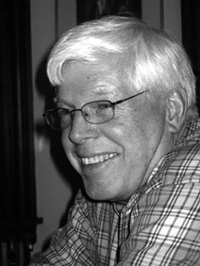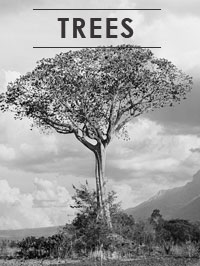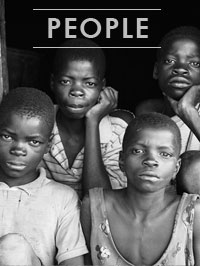 About the Photographer
About the Photographer
Richard Goldman is an economist and photographer. He retired from Harvard University in 2002, after 27 years at the Harvard Institute for International Development, the Kennedy School, and the Department of Economics.He specializes on food and agricultural policy issues and on macroeconomics.
He has served for extended periods as a policy advisor to governments in a number of developing countries, including Kenya (four years resident), Malawi, Indonesia, Malaysia (six years resident), Pakistan (three years resident), Sri Lanka, and The Philippines.
Images from his five-year project about orphans and guardians in Africa, The Missing Generation, have been exhibited by the Davis Museum (Wellesley College), the Global Health Council, the The New Grounds Gallery (Taos, NM), by UNICEF and Alliance Francais sponsorship in Malawi, the Newton (Ma.) Free Library, and The Boston Public Library.
Images from the project were also published in DoubleTake Magazine (December, 2002) His portfolio of African tree landscapes and portraits, 1994 - 2009, is currently the subject of a book project. Images from this project were exhibited at Verve Gallery of Photography, Santa Fe, N.M., in 2008.
Contact information: For information, e-mail Dick at rgoldman@newmex.com and dickgol@gmail.com
 About the African Tree Gallery
About the African Tree Gallery
In the 1990s as I traveled around Africa, on occasion I would encounter an unusually beautiful tree in an equally striking setting. The earliest tree portrait included in this portfolio was made in 1994. The scenes called to my mind the work of Japanese Bonsai artists. But I was photographing natural arrangements. In 2002 I decided to invest more time into this project, adding a week or two onto various consulting assignments in Southern and Eastern Africa and researching possible regions for exploring and photographing prior to visits. My aim was to make fine art, black and white, tree portraits that celebrate the style and beauty of African trees. This project took me to six countries including multiple visits in some cases. By 2010, the portfolio had grown to about 50 images. Currently I am working on a book. A selection of images from this book portfolio is shown here.
 About the People Gallery
About the People Gallery
I began this project in Malawi (September 1997). It expanded to include families and individuals in four regions, reflecting typical geographical and economic variation in Malawi, where, at the time, almost twenty percent of children were orphans. I identified families whose parents had died at different stages of their life cycles, in order to capture the social structural diversity that characterizes orphan families.
When younger parents die, they leave behind a small group of children. Usually a grandmother or aunt assumes principal responsibility for child rearing. Older parents often leave behind larger families, and when an older sister is present, she must take on adult family responsibilities prematurely. All of these arrangements are unstable, and the orphan families must adjust to many contingencies, including incapacity and death of elderly guardians and the departure of siblings. Unfortunately, AIDS is beginning to take its toll among the young women who have nurtured their brothers and sisters in the early transition following the death of parents.
I wanted to know a bit about how these families made out over time. And I wanted to use portraiture to convey something of the real human beings involved. My last visit was in September 2002. Over the five-year period, I visited most of the families 2-3 times. Some of the families did reasonably well and others poorly. This is not a scientific study, but I believe it provides insight beyond what can be known from a single visit or a snapshot in time. A selection of the portraits is included here.
Thanks to UNICEF Malawi, the Salima Aids Support Organization (SASO), the Roman Catholic Mission in Nzama, the Likulezi Project, Friends of Orphans, and the Chisomo Children's Club in Blantyre.
